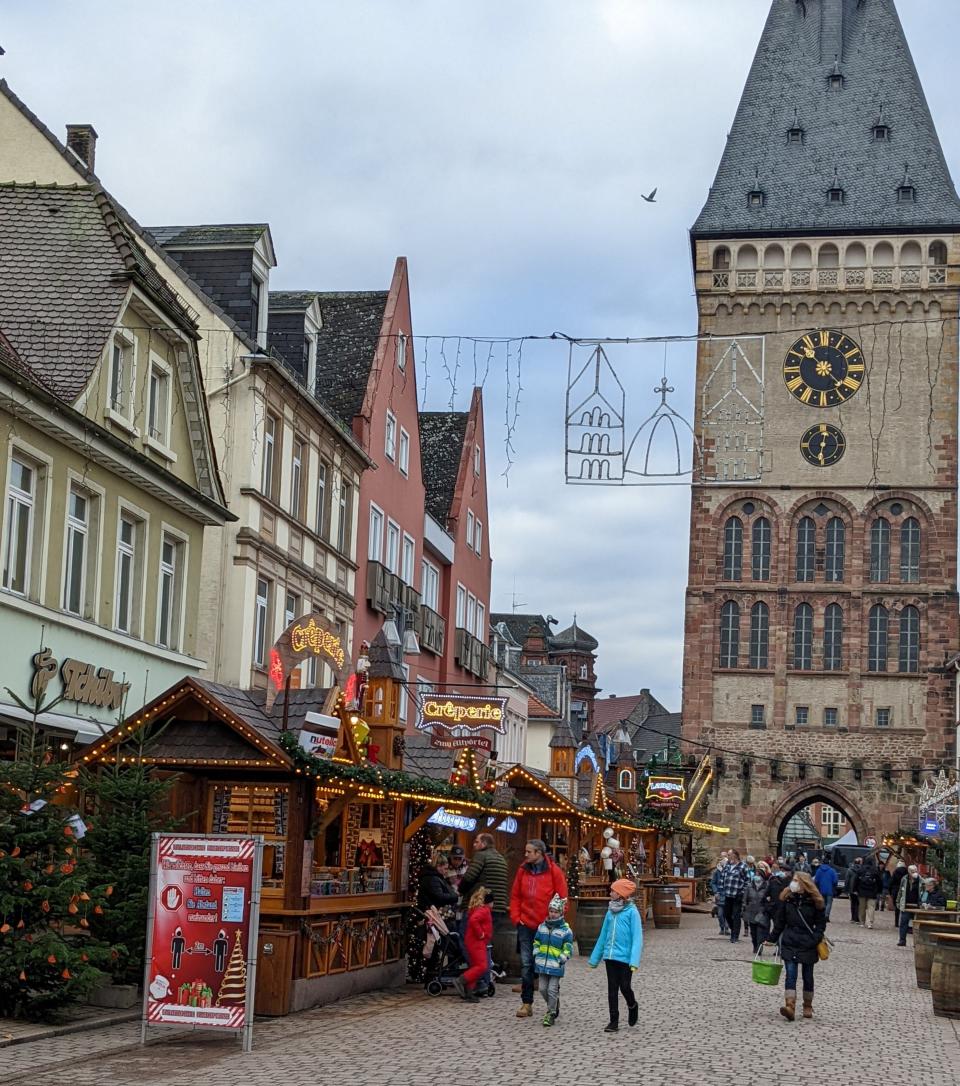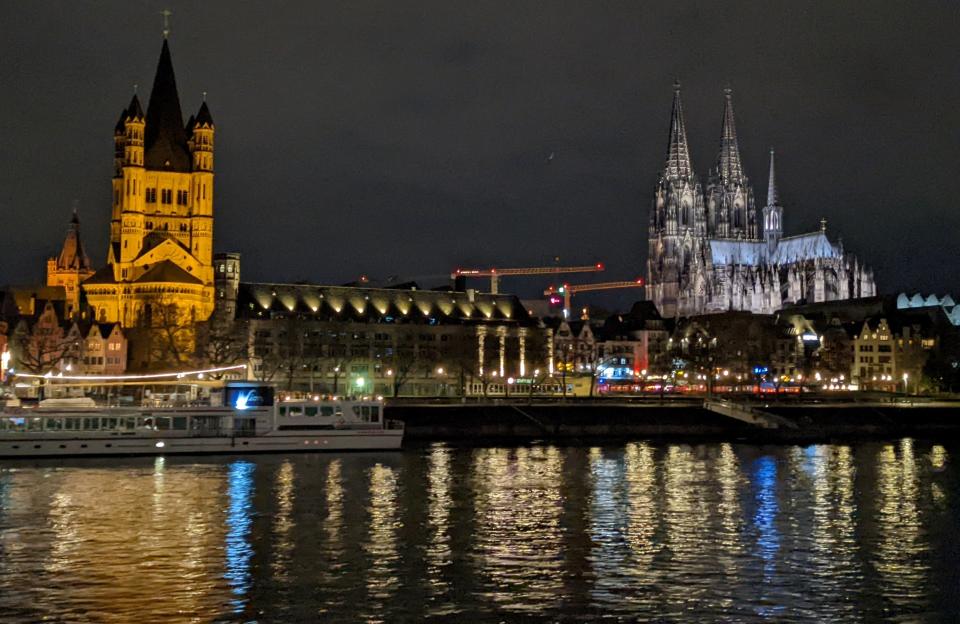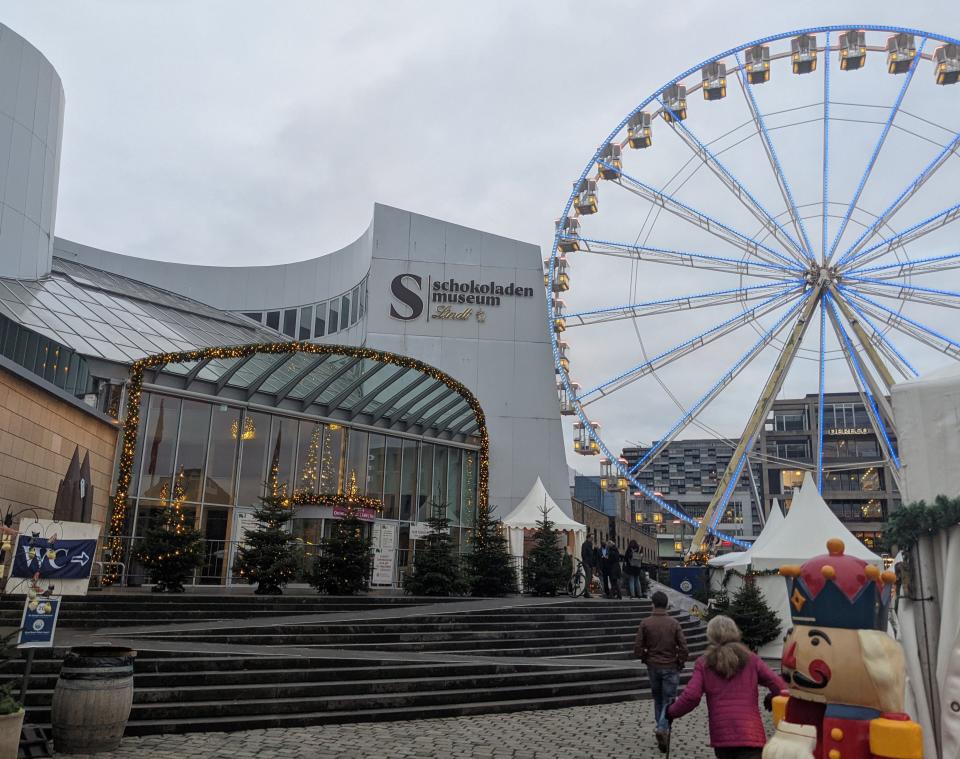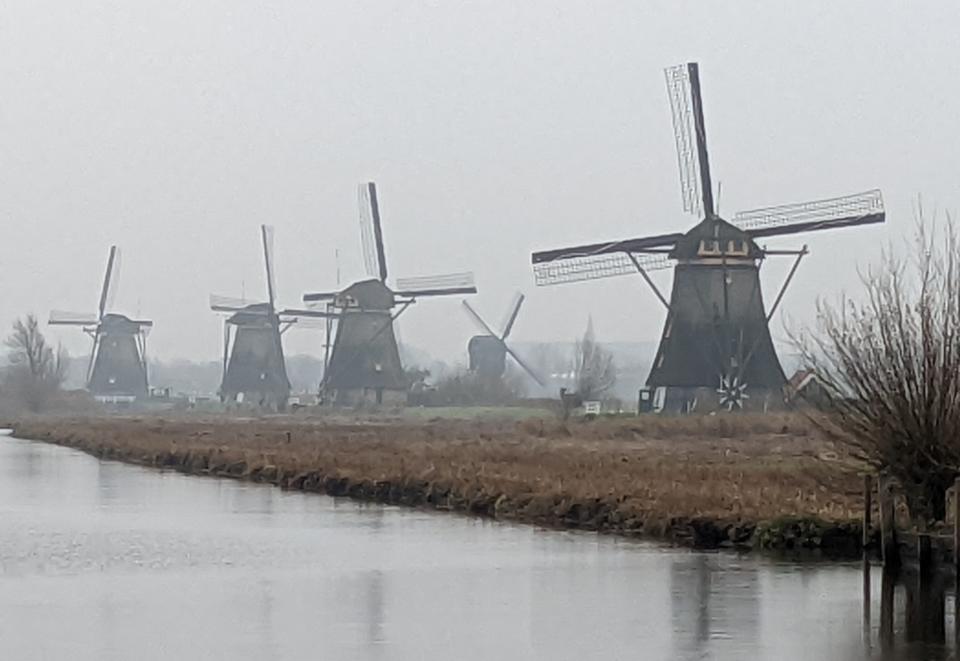Gardens: of the Cross Timbers: From the Swiss Alps into the North Sea
The Rhine River flows through five countries. As we floated down the Rhine, our next stop was Speyer, Germany. The Jewish community thrived for hundreds of years in Speyer. They were allowed to hold certain jobs such as bankers, physicians, lawyers, teachers and rabbis. During the black plague in 1349, after the community was wiped out a smaller version was re-established. The Jewish population ebbed and flowed until it disappeared in 1940. In the 1990s the community once again returned. The Mikveh is an archeological heritage site still in existence. The baths were consecrated in 1104 using groundwater in cleansing rituals. A series of stone steps took you down to the water’s edge.

The Christmas market opened at 11 am. Ornaments, spiced wine, even deer and wild boar meats were for sale. No time to spare, the buses whisked us to the boat docked in Worms. Once all were aboard, the longship sailed to Rudesheim.
To properly prepare us for Rudesheim, a demonstration on how to make Rudesheim coffee took place in the lounge. This is no ordinary coffee. Caramelize Asbach brandy (Asbach is a mellow, dark amber colored German brandy with spicy fruity overtones) and sugar in a large metal spoon over low flame until the sugar has dissolved and the mixture is bubbling. Pour into a small coffee cup. Add strong coffee. Top with whipped cream. Drink.
The ship docked at Rudesheim. A little road train took several of us over bumpy streets to Breuer’s Rudesheimer Schloss. We were treated to regional Hesse foods of potato soup, Riesling wines, rye bread, pork, mashed potatoes, cooked cabbage, strong schnaps and apple pie while listening to live music.
Seven cruise ships had docked in our harbor that night. The Hindenburg railroad bridge lay in ruins just past the boat. Built in 1911, the bridge was deliberately destroyed in 1945 by the Wehrmacht. Large sections were still strewn across the ground, but a large fence kept the public out.
Over forty castles line the middle Rhine. Some are in ruins while others have been renovated and turned into hotels, museums, restaurants or private homes. Ehrenfels Castle, 13th century, is surrounded by ancient vineyards. The 12th century Stahleck Castle was attacked frequently during the 17th century wars before being left in ruins for 237 years. In 1909 it was rebuilt and now houses a youth hostel. Ehrenbreitstein Fortress stands above the convergence of the Rhine and Moselle Rivers. Built by the Prussians, it was at one time the strongest fortress in Europe.
Our longship, the Viking Einar (Norse warrior who died in battle and went to Valhalla) arrived in Koblenz. We took the cable car up to the Fortress of Ehrenbreinstein. Cold and windy. “John Humphry”, aka Andreas the actor from northern Germany, led the tour. He pointed out Prussian military fortifications and dry moat while speaking in excellent British English. The view from the top was spectacular.
Next stop was Cologne, the oldest city in Germany. The Cologne Cathedral is the largest Gothic church in Europe. Construction began in 1248. Took 300 years to complete part of it before the money ran out. Napoleon used the Cathedral as a stable. After the Napoleonic War, Congress in Vienna gave the Koln area to the Prussians who finished off the Cathedral, with help from lottery money, in 30 years. Prussian engineers used steel for the framework, not wood.
In World War II, the Cathedral was used as a landmark by Allied bomber navigators. It did suffer fourteen aerial bombs. One bomb fell inside, but 75% of the stained-glass windows had been removed and stored in a safe place. We were shown a picture of a priest holding service in a rubble filled corner for American GIs at the end of the war.
Of the three spires, the two tallest spires are redone in the original Gothic but the smaller third spire was done in Art Deco. The stonemasons argued that during the original building of the cathedral, the spires reflected when they were built, not the style when it was started. Thus the third spire reflects a 20th century update.

According to our guide, the people of Cologne are the most open, liberal and accepting community in Germany. They do not have the wood smokers that hold incense, steins or cuckoo clocks. They do have cold Kolsch beer on tap served cold in 7-ounce glasses. If the glasses are drained, they will be constantly replaced unless a signal is given, the coaster placed on the top of the glass. The beer houses in Koln have no music or internet. These are places to communicate and get together….and confess your sins. Each beer house has a confessional. Peter’s Brau House had a creche scene flanked by two seats in front!
Walked around four Christmas markets. Quite a variety of lebkuchen, dried meats, cheeses, candles, spiced wine, roasted chestnuts and ornaments. Made a bee line for the Schokoladen Museum. Hans Imhoff, chocolate manufacturer, was born in Koln and spent years in the chocolate industry. The Schokaladen Museum is solely owned by the Imhoff family.

The history of chocolate, from cocoa trees growing in the tropics to the Mayans, Spanish and Europeans unfolded room by room. A tropical greenhouse contained cocoa trees. The smell throughout was amazing. The second floor presented the history of Mesoamerica, the chocolate drink and industrialization of chocolate manufacture. The third floor showed candy bars through the decades and the use of child labor.
The Einar’s longest sail was from Koln to Kinderdijk, the Netherlands. The draining of the lands is now mainly accomplished by electric and diesel pumps, but in the past windmills did the work. In a cold mist we toured the area of nineteen historic drainage windmills, pumping stations and storage sluices. Back on the boat to Amsterdam and from there on planes back to Oklahoma. The Netherlands was closed four days later (Covid).

Becky Emerson Carlberg, graduate of Oklahoma State (Plant Pathology) is a teacher, artist, writer as well as certified Oklahoma Master Gardener and Master Naturalist. Contact her at Becscience@att.net.
This article originally appeared on The Shawnee News-Star: Gardens: of the Cross Timbers: From the Swiss Alps into the North Sea

